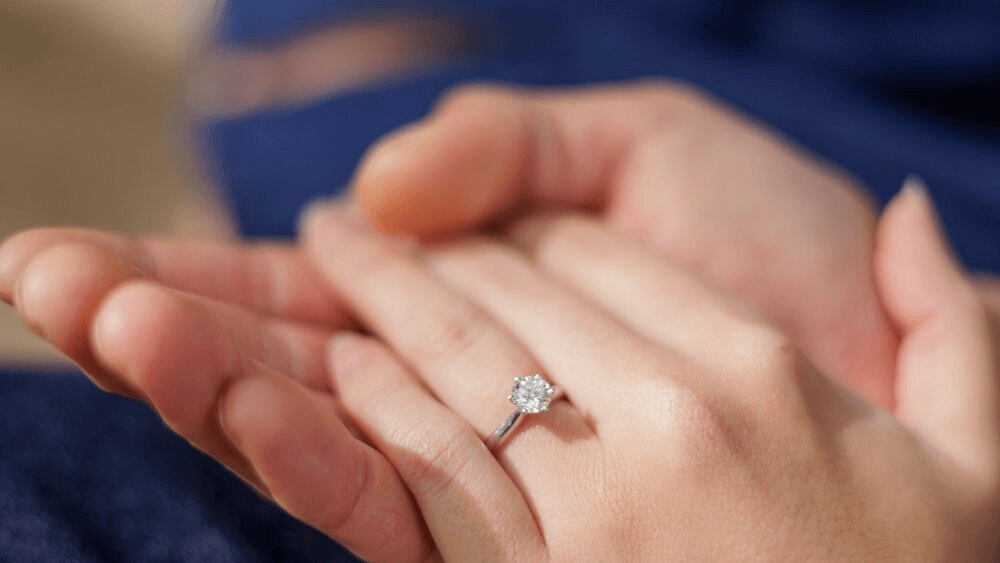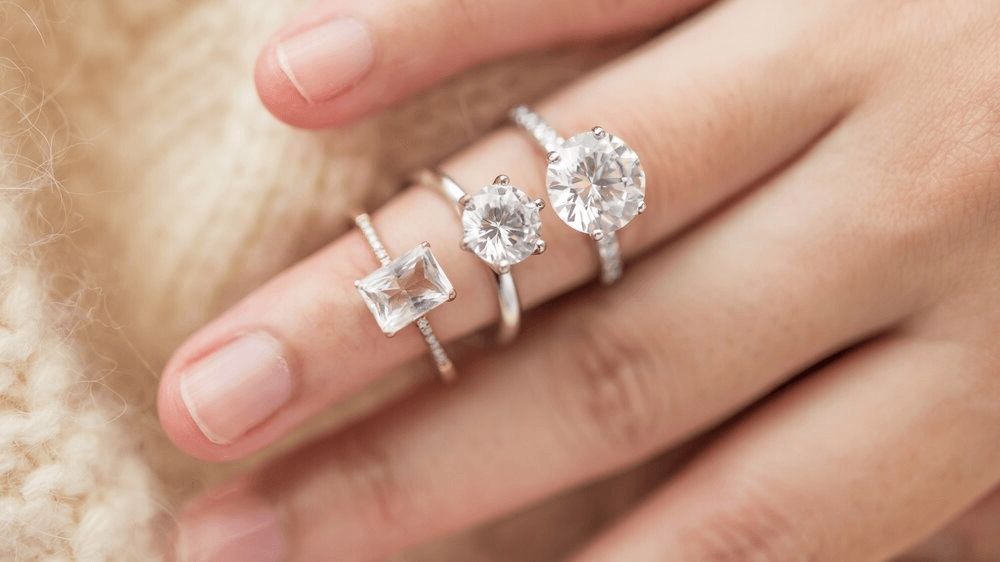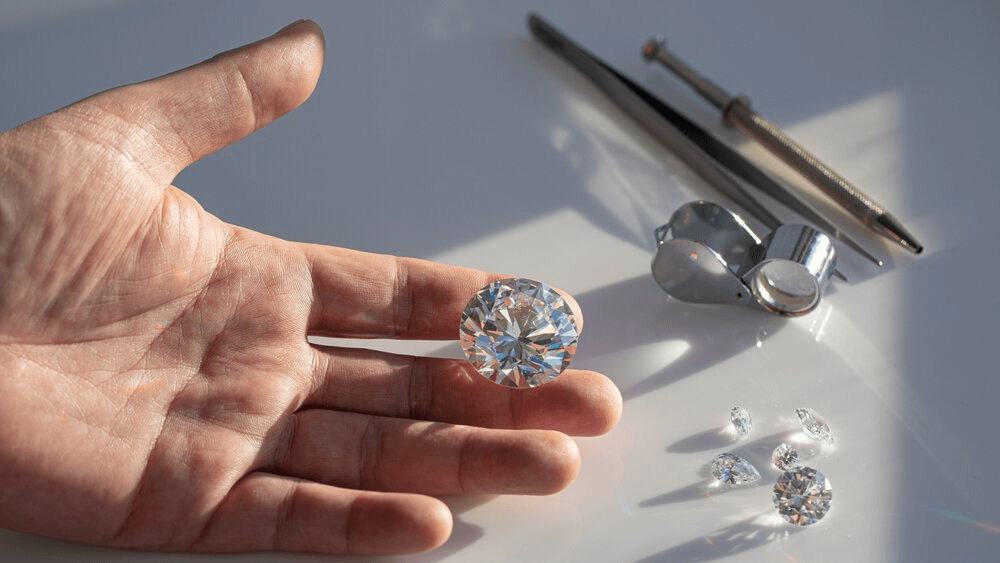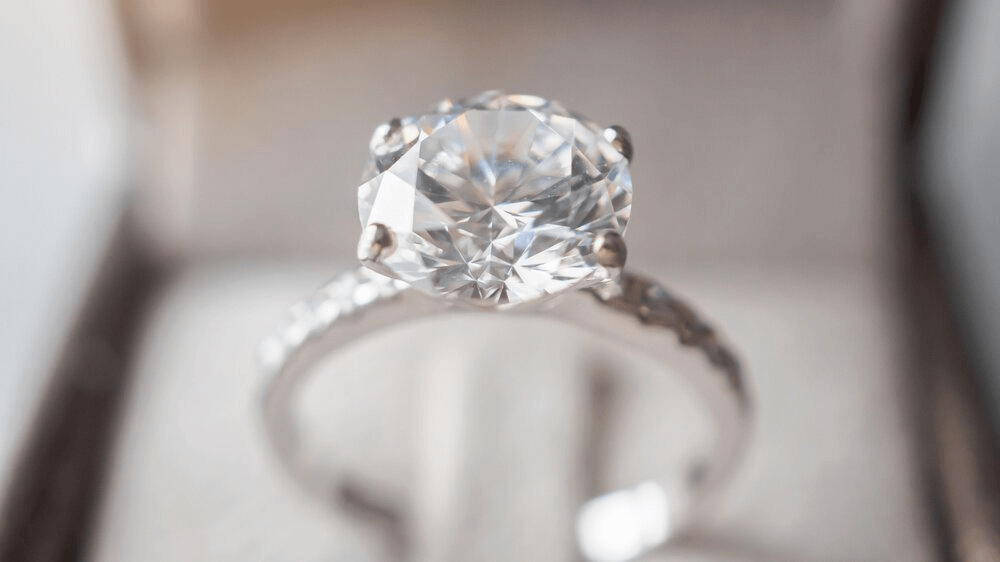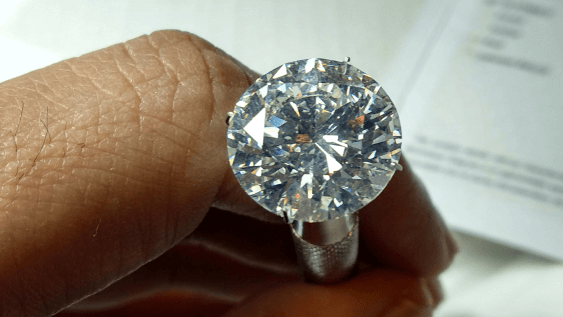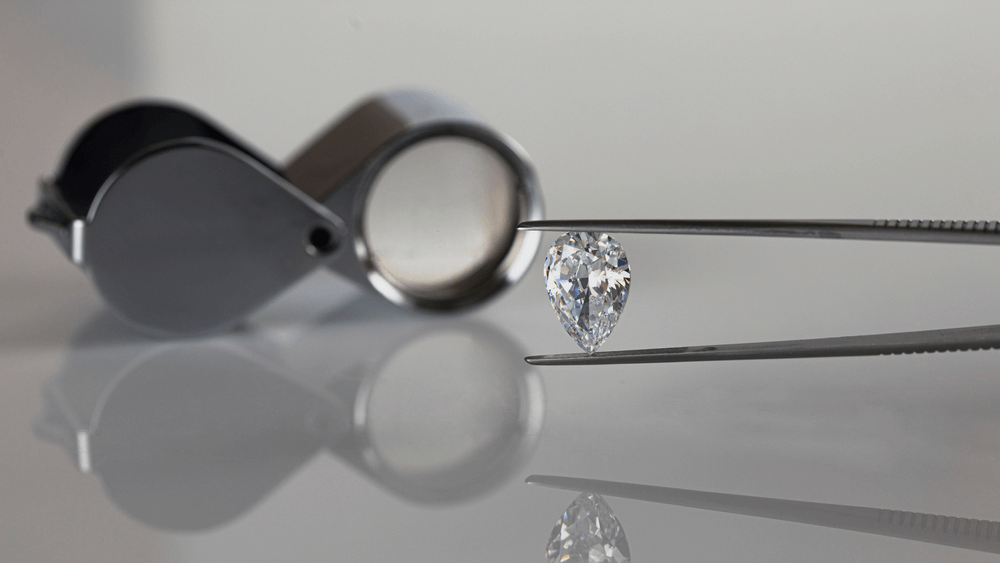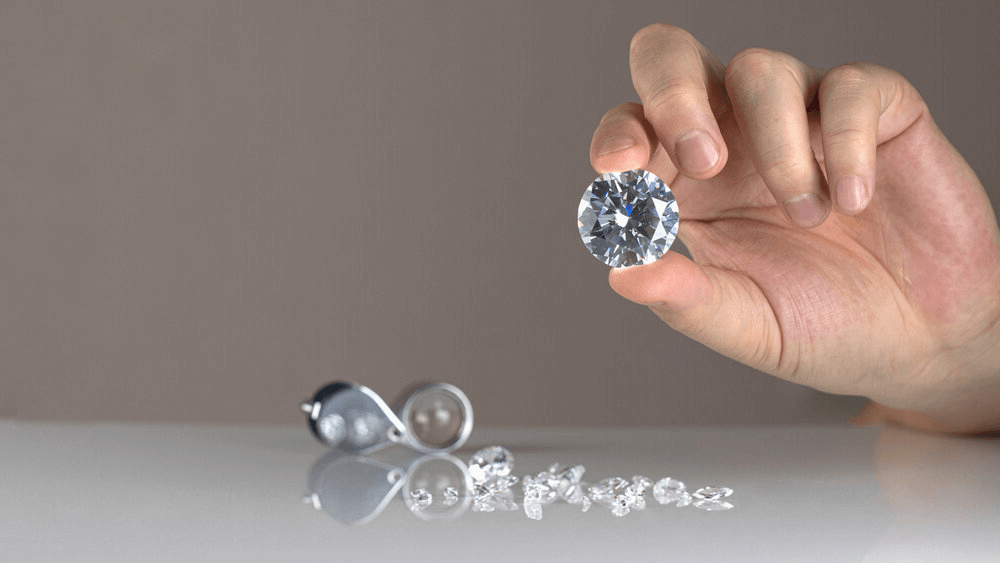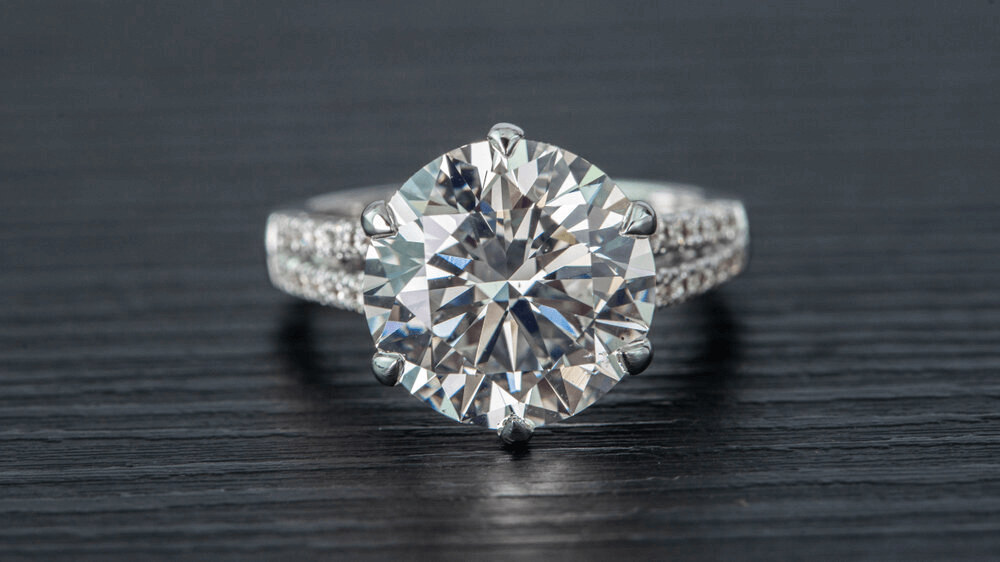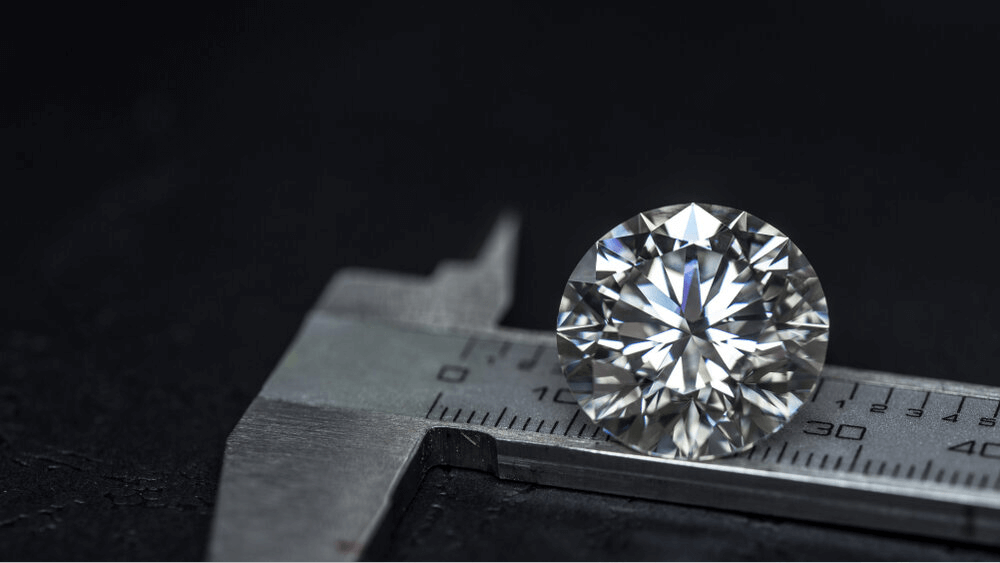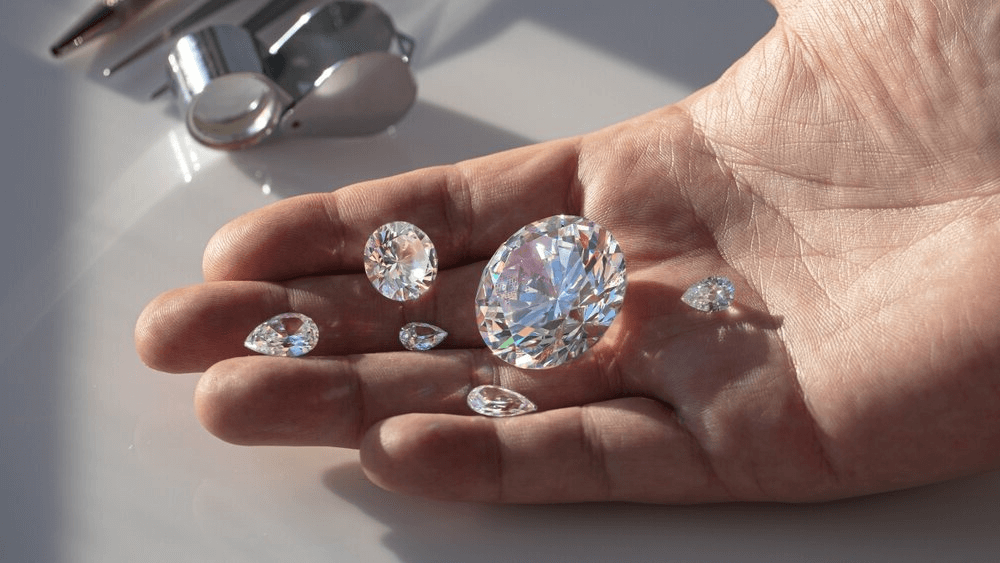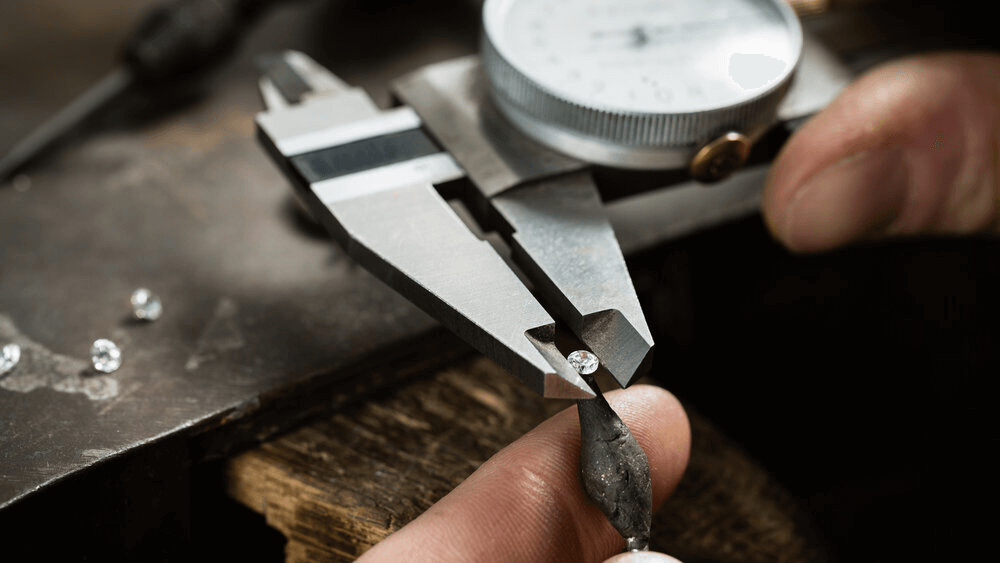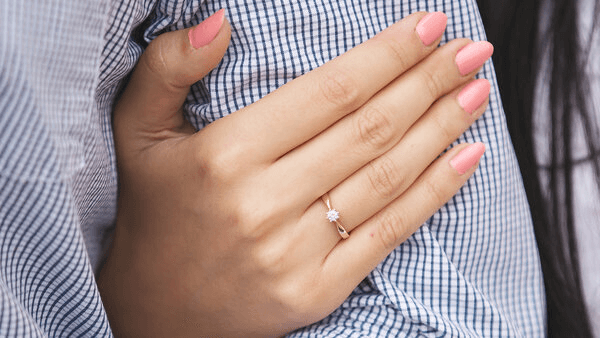What You Should Pay for a 1.5 Carat Diamond Ring?

By Gary A.

Edited by Olivia H.
Published Nov 14, 2021
Edited on Dec 18, 2024
For those seeking the perfect blend of size and brilliance, a 1.5 carat diamond offers the ideal balance of elegance and impact, making it a stunning choice for engagement rings.

- 6 Quick Tips for Navigating the 1.5 Carat Diamond Ring Market
- Introduction
- The Basics of 1.5 Carat Diamonds
- Price Insights: Navigating the Question of 1.5 Carat Diamond Price
- Natural vs Lab-Grown 1.5 Carat Diamonds
- Smart Buying: How to choose Your 1.5 Carat Diamond Ring
- Our Expert Take
- 7 FAQs
Before we dive deeper into the specifics, here are some practical tips to help guide your decision-making process:
6 Quick Tips for Navigating the 1.5 Carat Diamond Ring Market
Buying a diamond engagement ring, particularly in the 1.5 carat range, requires careful consideration to ensure you get the best value and quality for your investment. Below are practical tips to guide you through this process, focusing on the unique aspects of 1.5 carat diamond pricing and selection.
- Tip 1: Understand the ‘Four Cs’ Thoroughly Cut: A well-cut 1.5 carat diamond will exhibit superior brilliance and fire, often making it appear larger and more sparkling. Color: In this size range, slight color variations can significantly affect the price. Opt for a color grade that appears white in relation to its setting. Clarity: Look for a clarity grade where inclusions are not visible to the naked eye. Remember, higher clarity doesn’t always mean a better appearance. Carat: Understand that prices jump at half and full carat weights. Sometimes, opting for a slightly less than 1.5 carat diamond can offer a better value.
- Tip 2: Compare Diamond Shapes and Settings: Different shapes can influence the perceived size and sparkle of the diamond. For instance, elongated shapes like oval or marquise can appear larger than round or square cuts. The setting of the ring can also enhance the appearance of the diamond. A halo setting, for instance, can make the center stone appear more prominent.
- Tip 3: Scrutinize the Diamond Certificate: Ensure the diamond comes with a certification from a reputable lab like GIA or AGS. This certificate provides an unbiased assessment of the diamond’s qualities. Pay close attention to the grading details, as they directly impact the diamond’s value and price.
- Tip 4: Be Wary of ‘Magic Weight’ Premiums: Diamonds that are exactly 1.5 carats often come with a price premium. Consider looking for diamonds just under this weight (e.g., 1.48 or 1.49 carats) as they can offer better value without a noticeable size difference.
- Tip 5: Consider the Resale Value: While not the most romantic aspect, understanding the resale value is practical. Classic cuts and styles tend to retain their value better than more unique or trendy options.
- Tip 6: Pay Attention to Diamond Fluorescence: Fluorescence can affect the appearance of the diamond under certain lighting conditions. In some cases, it can make the diamond look whiter, but in others, it may create a hazy appearance. Determine the level of fluorescence you are comfortable with, as it can impact the diamond’s price.
Now that you’ve got these practical tips, use Jeweler AI below to find the perfect engagement ring that suits your style and budget:
Introduction
Finding a way to meet all of those expectations, hopes and wishes your partner holds for their engagement ring is one thing – but surpassing every single one, and creating something even they couldn’t have dreamed up in their wildest daydreams is another thing entirely.
A 1.5 carat engagement ring does just that. Featuring a center stone that is noticeably larger than the US average for diamond engagement rings, it’s a great way to grab attention, set hearts fluttering, and show off your chosen diamond shape.
For these reasons – and many others – 1.5 carat diamonds enjoy a premium price point high enough to surprise some shoppers who may be more accustomed to the costs of a 1 carat diamond ring instead. So, how much does creating your own 1.5 carat engagement ring really cost? We look at all the details below.
The Basics of 1.5 Carat Diamonds
1.5 carats equates to 0.3 grams, or 300 milligrams. While that might sound like an incredibly lightweight, diamonds of this weight are capable of creating an impressive focal point on the finger. Here’s what you need to know.
Setting the Scene: Why 1.5 Carats?
1.5 carats is a great choice if you’re looking to make a strong impression with your engagement ring, without paying the high premium cost of a 2+ carat diamond.
1.5 carats is noticeably larger than 1 carat and, while the overall cost of your engagement ring will certainly reflect that jump in size, the cost will be much more manageable than it would be for a diamond significantly larger.
It’s worth noting that 1.5 carats is considered a ‘magic weight’, which tends to fall on any carat weight ending in .00 or .50 (like 1 carat, 2 carats, 2.5 carats, etc.), and that these magic weights often fetch a premium price. For this reason, we’d recommend widening your search to include diamonds that fall between 1.35 and 1.5 carats in weight, since you might save a few hundred dollars on, say, a 1.43 carat diamond that looks as big as a 1.5 carat diamond.
Decoding Diamond Value: What Makes 1.5 Carats Special?
A Round Brilliant diamond weighing in at 1.5 carats will measure approximately 7.3mm in diameter, provided it is cut proportionately.
This is approximately 0.8mm larger than a 1 carat diamond which, though it sounds pretty minor, will be clearly discernible when you compare the two carat sizes side by side.
Here are the typical face-up measurements for 1.5 carat diamonds of other shapes:
| Princess Cut Diamonds | 6.5mm |
| Cushion Cut Diamonds | 6.5mm |
| Emerald Cut Diamonds | 7.5mm x 5.5mm |
| Square Emerald (Asscher) Cut Diamonds | 6.5mm |
| Oval Cut Diamonds | 8.5mm x 6.5mm |
| Pear Cut Diamonds | 8.5mm (length) |
| Marquise Diamonds | 12mm (length) |
| Radiant Cut Diamonds | 7.5mm (length) |
A 1.5 diamond is not going to look as extraordinary as, say, a 2 or 3 carat diamond engagement ring, but it is going to look beautiful and bold – and will be large enough to take center stage, even in a more elaborate ring setting, like this Platinum Halo engagement ring featuring a Cushion cut center stone.
For the best face-up appearance possible, it is important you understand the fundamentals of diamond proportion, since this won’t be reflected in any particular grade within the diamond’s GIA report.
Price Insights: Navigating the Question of 1.5 Carat Diamond Price
A Glimpse into the Diamond Market
1.5 carat diamonds typically cost between $5,000 and $36,000, depending on many factors – most notably, cut quality, clarity, and color.
If you’re still pretty new to the world of diamond buying, the first thing you’re likely to notice is quite how much these diamonds can differ in price. This all comes down to quality, and the fact that larger diamonds are not necessarily more expensive than better quality diamonds of a lower carat weight, or cheaper than slightly larger diamonds of a lower quality.
Most people come into this process wanting a definitive answer to the question, ‘How much does a 1, 1.5, 2, or 3 diamond cost?’ While it may sound simpler, having a set price per carat would actually make it harder for shoppers – not easier.
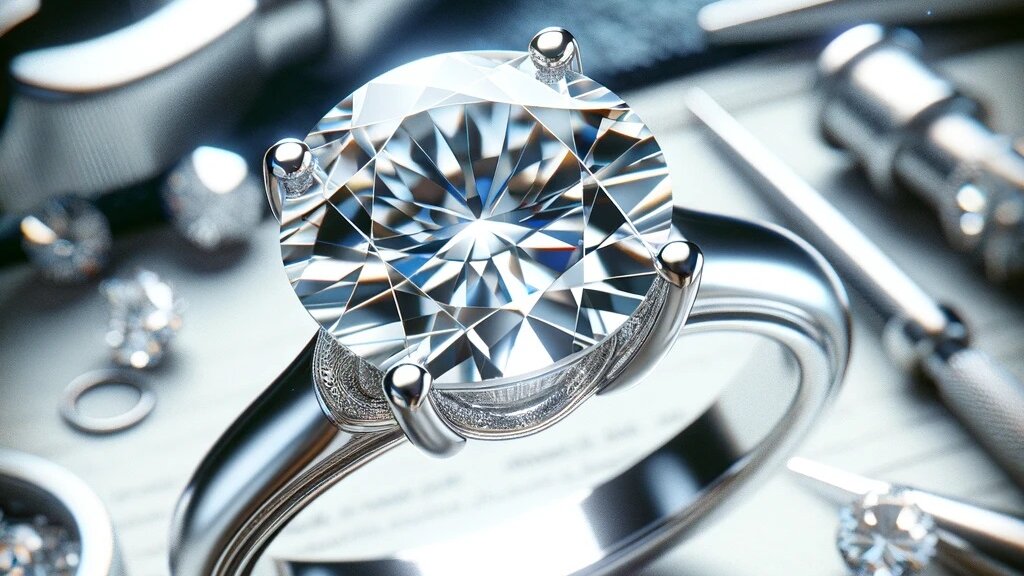
The Cost Spectrum: What to Expect of 1.5 Carat Prices
While we’re never going to recommend you home in on the very lowest prices available for 1.5 carats, there is a sweet spot to be found way before you’re looking at the diamonds that fall in at the £36,000 mark.
You’ll also notice there’s a pretty big jump from the average price range we gave for 1 carat diamond engagement rings, which tend to fall between $2,500 and $20,000.
This is simply down to the fact that size is a coveted feature in diamonds. Most people, if given the choice, would rather go bigger than smaller, so there’s always going to be a premium price attached to diamonds that fall above 0.90 carat mark.
Comparing 1.5 Carat with Alternatives Like 1.8 Carats
It’s 0.50 carats above the average size for engagement ring diamonds in the US. So, while noticeably larger than a lot of diamonds out there, it’s not considered particularly large.
While this might not sound like the most enthusiastic answer, it’s worth keeping in mind that the 1.5 carat weight occupies a great middle ground between the ‘average’ one carat and the bulkier 1.8 carat. It grabs attention without being ‘too much’, and it fits the finger very comfortably without overshadowing the rest of the ring’s design.
So, to put it bluntly, the 1.5 carat diamond is not going to be considered ‘big’ big. The right diamond will, however, be considered beautiful, eye-catching, impressive and, above all else, romantic.
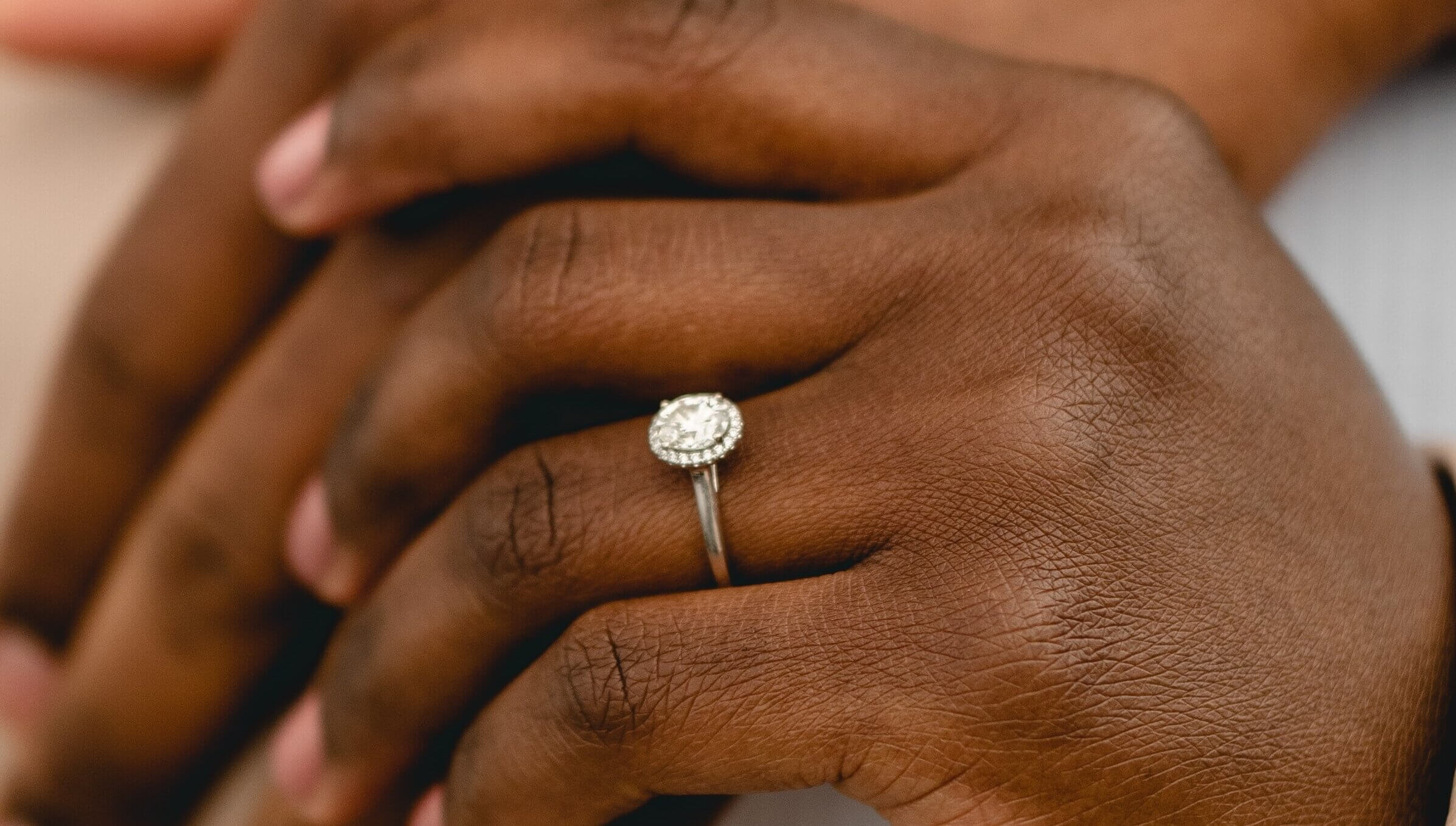
Natural vs Lab-Grown 1.5 Carat Diamonds
When comparing natural and lab-grown 1.5 carat diamonds, several factors come into play:
1. Formation and Rarity
Natural diamonds are formed over billions of years deep within the Earth. This process results in unique inclusions and characteristics, making each stone truly one-of-a-kind. Many buyers appreciate the rarity and traditional value of natural diamonds, viewing them as a timeless symbol of love.
2. Pricing
Natural diamonds tend to be pricier due to extensive mining processes and high market demand. On the other hand, lab-grown diamonds are created in controlled environments using advanced technology. This allows for greater affordability, with lab-grown diamonds typically costing 20-40% less than their natural counterparts.
3. Quality
Both natural and lab-grown diamonds possess the same physical and chemical properties. Lab-grown diamonds can offer a stunning, high-quality option without the hefty price tag.
4. Personal Preference
Ultimately, the choice between natural and lab-grown diamonds comes down to personal preference. Consider your values regarding sustainability and your budget when making this decision.
Avearage Prices Lab Grown vs. Natural 1.5 Diamonds:
Here’s a breakdown of the average prices for 1.5 carat diamonds, comparing natural and lab-grown options by shape, color, and clarity:
| Carat | Shape | Color | Clarity | Natural Price ($) | Lab-Grown Price ($) |
|---|---|---|---|---|---|
| 1.5 | Round | F | VS2 | 12,450 | 1,800 |
| 1.5 | Pear | F | VS2 | 10,200 | 2,145 |
When comparing the average prices of 1.5 carat diamonds, there is a striking difference between natural and lab-grown options. For a round-shaped diamond with F color and VS2 clarity, the natural price is a hefty $12,450, while the lab-grown equivalent is only $1,800. Similarly, a pear-shaped diamond of the same specifications commands a natural price of $10,200, compared to $2,145 for its lab-grown counterpart. These comparisons clearly illustrate that after the extended lab-grown price drop, the financial benefits of choosing lab-grown diamonds, offering consumers high-quality stones at a fraction of the cost of their natural counterparts, without sacrificing beauty or brilliance.
Smart Buying: How to choose Your 1.5 Carat Diamond Ring
If you want to buy smart, you need to understand the many aspects of diamond quality, including the Four Cs, proportion, fluorescence and other visual features.
No diamond is priced on a whim. Any diamond worth your time and money will have undergone rigorous examinations from expert graders (preferably from a GIA lab) in order to ascertain the many benchmarks of diamond quality, and then be priced accordingly.
One poor feature is enough to bring down a diamond engagement ring’s value by thousands of dollars.
In many cases, the buyer stands to benefit from this. Provided those price-lowering features don’t impact the stone’s appearance, picking a diamond worth thousands of dollars less than another is an incredibly wise decision.
The cheapest 1.5 carat diamonds out there, however, will represent poor decisions. They will be noticeably lower in quality, and will noticeably bring down the appearance and quality of your engagement ring.
Our Expert Take
Ideally, your 1.5 carat engagement ring will cost between $15,000 and $20,000. Too low, and your diamond will appear low quality; too high, and you’ll have wasted thousands of dollars on features that are not noticeable.
1.5 carats is a great weight to look at. It is, by no means, as large as some of the engagement rings you see out there today, but it’s also noticeably above the average size – and will often appear closer in size to a 2 carat diamond than a 1 carat diamond.
It makes it much easier for you to get the most out of a beautiful cut, whether you’re using the traditional Round Brilliant or something a little different, like the Princess or Emerald, without being so large that you have to go for a much higher color or clarity grade.
Yes, it’s substantially more expensive than a 1 carat diamond engagement ring would be but, if it fits in your budget without forcing you to sacrifice on quality, then the 1.5 carat diamond is something we would recommend to any shopper looking to make a strong impression during their proposal.
7 FAQs
- Q1: How much does a 1.5 carat diamond ring typically cost?
- A: The price of a 1.5 carat diamond ring can vary widely, typically ranging from $5,000 to $36,000. This variation depends on factors like cut quality, clarity, color, and the ring’s setting.
- Q2: Is a 1.5 carat diamond considered large for an engagement ring?
- A: Yes, a 1.5 carat diamond is considered larger than the average size for engagement rings in many countries, including the U.S. It’s noticeably larger than a 1 carat diamond but not as large as 2 carats and above.
- Q3: Does the cut of a 1.5 carat diamond affect its price significantly?
- A: Absolutely. The cut quality is crucial in determining a diamond’s brilliance and overall appearance, which directly impacts its price. A well-cut diamond will be more expensive than a poorly cut one of the same carat weight.
- Q4: Are lab-grown diamonds cheaper than natural diamonds of the same size?
- A: Yes, lab-grown diamonds are generally more affordable than their natural counterparts. They offer the same physical and chemical properties but are often sold at a lower price point.
- Q5: How can I ensure I’m getting a good quality 1.5 carat diamond?
- A: Always look for a diamond with a certification from a reputable grading lab like the GIA or AGS. This certification assures you of the diamond’s authenticity and quality based on standardized grading for the Four Cs.
- Q6: Is it better to buy a diamond just under 1.5 carats to save money?
- A: Opting for a diamond slightly under 1.5 carats (e.g., 1.48 or 1.49 carats) can offer better value for money. These diamonds often cost significantly less than those exactly at 1.5 carats, and the size difference is barely noticeable.
- Q7: Can the setting of the ring make a 1.5 carat diamond appear larger?
- A: Yes, certain settings like halo designs can make the center diamond appear larger. The setting plays a significant role in the overall appearance of the diamond on the ring.
Unlock the elegance of a 1.5 carat diamond ring with Jeweler AI. Click to explore our expertly curated selection!
Here are more specific diamond prices topics to browse:
- Melee Diamonds: The Perfect Accents to Enhance the Center Stone
- Small Diamond Engagement Rings: Big Sparkle Comes In Little Packages
- 0.25 Carat Diamond: Tiny Treasure or Just Too Small?
- The True Value of a 0.5 Carat Diamond Ring Revealed
- 0.7, 0.8, 0.9 Carat Diamond Showdown: Which One Wins?
- Price Alert: Don’t Overpay for a 1 Carat Diamond Ring!
- Price Alert: How Much Should You Pay for a 2 Carat Diamond Ring?
- How Much Does a 2.5 Carat Diamond Really Cost?
- The Real Cost of a 3 Carat Diamond Ring
- Industry Secret: How Much Does a 4-Carat Diamond Ring Actually Cost?
- How Much is Too Much? The True Cost of 5 Carat Diamond Ring!
- 6 Carat Diamond Rings: Pricing Breakdown & Value Tips
- 7 Carat Diamond Rings: Affordable Luxury Prices Revealed
- 8 Carat Diamond Rings: Price Comparison & Savings Tips
- 9 Carat Diamond Rings: Detailed Pricing Guide & Best Deals
- 10-13 Carat Diamonds: The Ultimate Symbol of Luxury!
- 15 Carat Diamonds: Why Celebrities Love Them!
- Unveiling the Majesty: The Secrets Behind the 20 Carat Diamond Ring!
- Decoding the Grandeur: The Journey to Choosing a 25 Carat Diamond Ring
- Average Carat Size for Rings: What’s the Ideal?
- Understanding What Is CTTW Diamond In Engagement Ring
- The Truth About Why Diamonds Are So Expensive and Incredibly Valuable
FOLLOW-UP GUIDE SERIES

